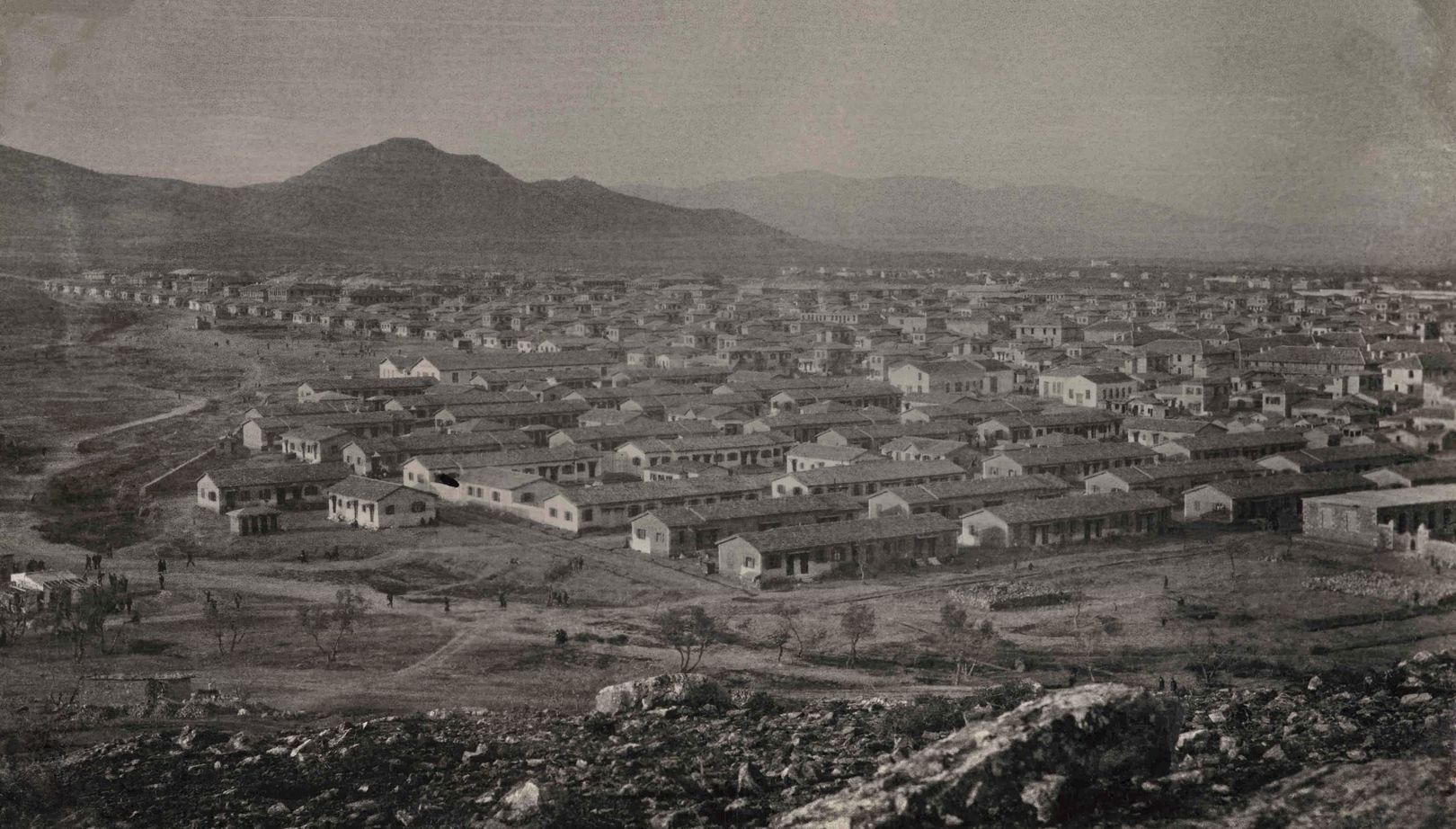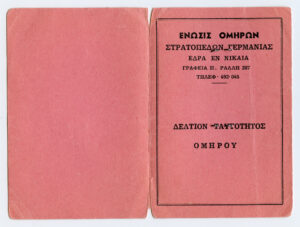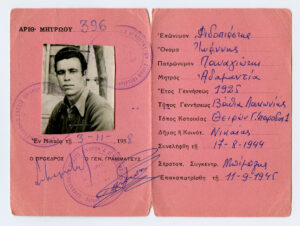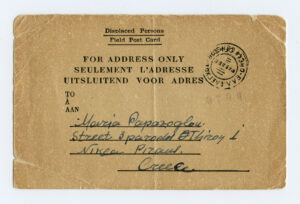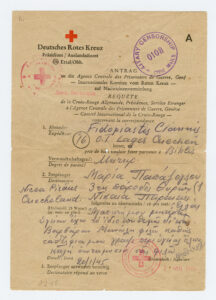Mani, Mylasa, Bilbis, Nikaia: the many crossing paths of migration
Full Description
According to his official documents, Ioannis (Giannis) Feidopiastis was born in Vathia, Mani, in 1925, but family narratives place his birth a few years earlier. At a very young age, before the outbreak of the Second World War, he left his village and moved to Piraeus. He lived in Agia Sofia with his siblings and gradually started working at the Piraeus Port Authority (OLP) as a dockworker. Since the end of the 19th century, most of the people from Mani who lived in Piraeus worked at the docks, establishing an employment network that attracted new migrants and also functioned as a safety net of mutual assistance for the newcomers. Work at the port remained out of bounds for refugees until the first years after the Second World War.
A family of his compatriots who lived in the refugee settlement of Nea Kokkinia introduced him to their young neighbour, Varvava Papazoglou, and soon the couple got engaged. Varvara Papazoglou, daughter of Maria Karageorgiou from Mylasa (Milas) in Asia Minor and Marinos Papazoglou from Filippoupoli (Plovdiv) was born in the wooden houses erected by the Refugee Relief Fund in Nea Kokkinia in 1927. In August 1944, Giannis was living with his fiancée Varvara, her mother and her brother (her father, Marinos, had been killed a short time before) on the first side alley of Theiron Street. On the dawn of August 17, the residents of the small dwelling, along with the rest of the settlement, were woken by the blockade of the German occupying forces. Giannis was led to the Osia Xeni Square and from there was transferred to the Chaidari army camp along with hundreds of the settlement’s residents. He was one of the lucky ones who didn’t get executed on the spot during his arrest or on the square. According to the documents that his daughter, Adamantia, has in her possession, two days later, on August 19, he was transported to Germany by train to the Biblis concentration camp where he did forced labour under horrible conditions.
Once again, Giannis was lucky enough to stay alive until the liberation. At the beginning of January, he managed to send his first letter to his loved ones through the International Red Cross, letting them know that he was alive and would be coming back. The letter reached his fiancée six months later, in June 1945. He was repatriated on September 11, 1945. He married Varvara Papazoglou and they had two daughters, Adamantia and Maria. He went back to working at the port and, later, at the Papastratos cigarette factory. He lived the rest of his life on the first side alley on Theiron Street. In 1962, the small refugee house was torn down to make way for a two-story building that could house Giannis’ growing family. He died in 1992, while his wife, Varvara, died in 2017.
In the family of Giannis Feidopiastis and Varvara Papazoglou, we encounter representatives from the entire spectrum of movement that took place during the first half of the 20th century: internal migrants from the Peloponnese to Piraeus, refugees from Asia Minor and the Balkans, people displaced by the Second World War. A single family encompasses people who were forced to move in peace time and war time, people who got together and shared their life in a small refugee house in the settlement of Nea Kokkinia, reflecting the era’s many different migration paths, but also the places where they all intersect.
Bibliography
Oral interview with Adamantia Feidopiasti, March 20, 2022.
